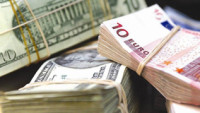 US markets continued to go from strength to strength last week, as they continued to build on the gains of 2017. The S&P500 in particular has put in its best start to the year since 2003, as corporate earnings and a strengthening US and global economy build optimism about the prospects for further profits growth.
US markets continued to go from strength to strength last week, as they continued to build on the gains of 2017. The S&P500 in particular has put in its best start to the year since 2003, as corporate earnings and a strengthening US and global economy build optimism about the prospects for further profits growth.
While US markets outperformed with new record highs, despite a long weekend for Martin Luther King Day, markets in Europe were more mixed with the German DAX and France CAC40 finishing the week lower over concerns that an appreciating euro could hit overseas earnings potential.
No such concerns affected the FTSE100 which, helped by rising oil prices and rising yields also finished the week higher, posting its sixth successive weekly gain, also closing at a record high.
Both the pound and the euro enjoyed a positive finish to the week against the US dollar last week, which fell sharply across the board despite 2 year bond yields hitting their highest levels since 2008.
Rising expectations of a US rate rise at the March meeting, which were driven by a stronger than expected core CPI number didn’t help a greenback that fell to its lowest level against a basket of currencies to a three year low.
The rise of the euro was particularly notable driven by an expectation that the European Central Bank might well look to pare back its stimulus program more quickly than markets are expecting, as well as rising confidence that German Chancellor Angela Merkel is on the road to making progress in putting together a new coalition government with the SPD.
For all the markets optimism about the latter this is by no means the done deal they think it is. There are many on both sides of the political divide uncomfortable with a continuation of the status quo, particularly on the SPD side, whose share of the vote is already at post war lows of 20.5%. As for some German voters the prospect of another four years of the same could drive more of them to the fringe parties.
A new coalition agreement would also make the AfD the official opposition which in itself brings with it extra rights and privileges, such as sitting on the parliament’s budget committee. In essence there still remains some way to go before a coalition deal is sealed, with the SPD membership due to vote on last week’s blueprint on the 21st January. Markets should be careful, this story may have some way to run.
The performance of the pound was also notable, buoyed by improving economic data, as well as reports that Spanish and Dutch ministers were corralling behind support for a “soft Brexit” deal.
Expectations of rising inflation have helped drive a rise in yields in the past week or so, amidst talk that the bull market in bonds could well be at a tipping point, however recent inflation data isn’t entirely definitive in that regard, despite commodity rises that have been quite significant in recent months.
This week we’ll be getting the latest December readings for UK CPI, as well as the final EU CPI readings which in preliminary readings still look fairly weak.
That being said, later this week the Bank of Canada will most likely fuel expectations of one of many interest rate rises this year when they meet later this week, with a possibility that they could raise rates again by 25 basis points, shadowing the recent rate rise by the US Federal Reserve.
EURUSD – the euro broke higher pushing through last year’s high at 1.2095 as well as closing above 1.2170 the 50% retracement of the 1.3995/1.0340 down move, opening up a potential move towards the 1.2600 area and 61.8% retracement level. Support now comes in at the 1.2080/90 level and previous peaks.
GBPUSD – the pound pushed though and above the 1.3660 highs of last year closing at its best level since the Brexit vote in June 2016, opening up the prospect of further gains towards 1.3975. It first of all needs to push above the 1.3830 level and February 2016 pre Brexit vote lows. Support comes in at the 1.3650 area and 1.3500.
EURGBP – currently being capped by the 100 day MA at 0.8910 and needs to close above that to open up the 0.9000 area. While below last week’s highs the risk remains for a return to last week’s lows at 0.8805/10 and a return to the recent range lows at the 0.8740 area, with a close below targeting a move towards 0.8650.
USDJPY – while below the 112.00 area we remain at risk of a move towards the 110.80 level and November lows. We need a move back above 112.20 to target a retest of the 113.60 area. A move below 110.70 opens up a move towards 109.80.












